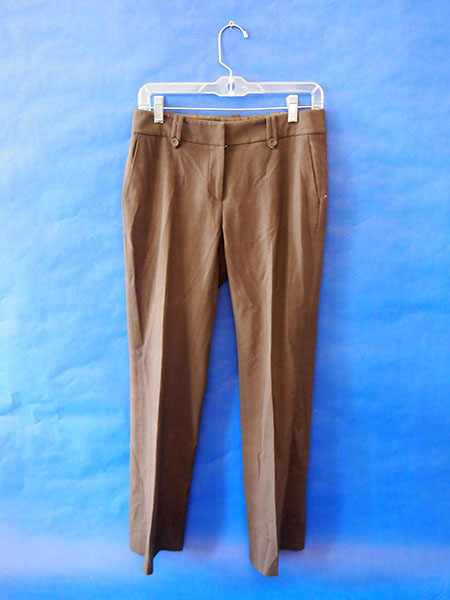![]() body | color | collections | commodity | cube | document | fabric | fetish | gender | glass | home | identity | living | machine | metal | minimal | mobility | narrative | olfactory | organic |
body | color | collections | commodity | cube | document | fabric | fetish | gender | glass | home | identity | living | machine | metal | minimal | mobility | narrative | olfactory | organic |
![]() pain | paper | plastic | plugs | power | protective | rectangular | ritual | round | sound | souvenir | spiritual | style | text-based | time | tool | touch | uniform | value | visual | warm | wood
pain | paper | plastic | plugs | power | protective | rectangular | ritual | round | sound | souvenir | spiritual | style | text-based | time | tool | touch | uniform | value | visual | warm | wood
| Clothing: Brown Dress Pants | |||
Narrative: Talbots Brown dress pants Given to me by my sister in 2010 who was given them by my mother's co-worker. In 1946 American du Pont de Nemours and Co. purchased right to manufacture polyester in the United States nearly reversing fiber rations in the U.S. in the 1950’s. It’s development and usage in World War II brought the use of synthetic fibers during wartime up 10%. Derived from coal, air, water, and petroleum. Principle ingredient in manufacturing is ethylene (from petroleum). Fibers are formed from a chemical reaction between acid and alcohol. The structure of the molecule created repeats throughout the fiber length. Basic forms of manufacturing are filament, staple, tow, and fiberfill. Does not absorb moisture but does absorb oil; perfect for application of water, soil, fire resistant finishes. Does not stretch out of shape once pre-shrunk, does not get damaged by mildew. Spandex fibers are produced in four different ways: melt extrusion, reaction spinning, solution dry spinning, and solution wet spinning. All of these methods include the initial step of reacting monomers to produce a prepolymer. Once the prepolymer is formed, it is reacted further in various ways and drawn out to make the fibers. The solution dry spinning method is used to produce over 94.5% of the world's spandex fibers. The first step is to produce the prepolymer. This is done by mixing a macroglycol with a diisocyanate monomer. The two compounds are mixed in a reaction vessel to produce a prepolymer. A typical ratio of glycol to diisocyanate is 1:2. The prepolymer is further reacted with an equal amount of diamine. This reaction is known as chain extension reaction. The resulting solution is diluted with a solvent to produce the spinning solution. The solvent helps make the solution thinner and more easily handled, and then it can be pumped into the fiber production cell. The spinning solution is pumped into a cylindrical spinning cell where it is cured and converted into fibers. Rayon is a manufactured regenerated cellulose fiber. It is made from purified cellulose, primarily from wood pulp, which is chemically converted into a soluble compound. It is then dissolved and forced through a spinneret to produce filaments which are chemically solidified, resulting in synthetic fibers of nearly pure cellulose. Because rayon is manufactured from naturally occurring polymers, it is considered a semi-synthetic fiber. Specific types of rayon include viscose, modal and lyocell, each of which differs in manufacturing process and properties of the finished product. |
 |
||
![]()
